The aluminium Kinesis Tripster AT gravel bike claims to bring the spirit of the iconic titanium Tripster ATR to a more affordable price point, but does it still channel the same adventurous DNA? We put the £2200 bike to review on the Scottish gravel to find out.
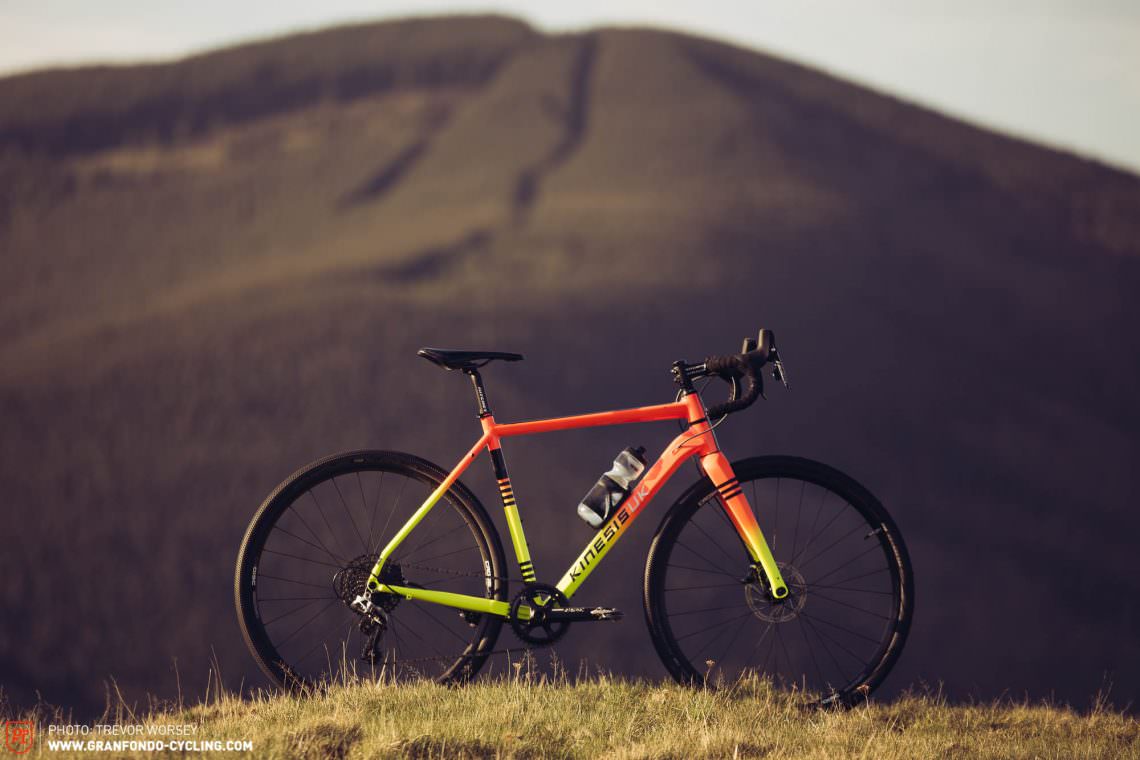
The Kinesis Tripster ATR Titanium is an iconic bike, targeted directly at riders who consider the horizon a challenge and measure their adventures in days, not hours. The aluminium Tripster AT channels that same spirit and DNA, sharing an identical geometry and ethos, but wrapped in a more affordable package. With the capacity to accept 700 x 45C or 650 x 52B tyres easily, the Tripster AT is designed to go anywhere. The Kinesis is available in two colourways in sizes 48 / 51 / 54 / 55.5 / 57 / 60 / 63 cm. There will be a frame and fork only option for £699.99, with a full build SRAM Rival 1 group-set and Kinesis Crosslight CX Disc.v4 wheels for £2200.00.
The Tripster AT In detail
The Tripster AT was designed in collaboration with the late Mike Hall, multiple Tour Divide and Trans Am bike race winner and legendary ultra-distance cyclist, who brought his extensive knowledge of bikepacking into the design process. The vibrant frame colours also stemmed from Mike’s input, with a high-visibility fade that certainly makes the bike stand out. This attention to safety and road visibility is a fitting mark of respect to Mike’s legacy. The frame is manufactured from Kinesium alloy with a 142 x 12 mm rear thru-axle and is ported for both mechanical and Di2 shifting. The Tripster AT uses a standard threaded BSA bottom bracket, 27.2 mm seatpost for added comfort and rack and mudguard mounts. The Kinesis Tripster AT bike runs on Kinesis’s own 1,720 g Crosslight V5 wheelset with 23 mm internal width, fitted with Schwalbe’s G-One 700 x 38C gravel tyres. The 1 x groupset has a 40 / 11-42 range and consists of a mix of SRAM Rival 1 (derailleur) and Apex 1 (shifter). The Tripster AT features a carbon Columbus Futura Cross fork with 12 mm thru-axle, with a flip chip allowing you to run either 47 or 52 mm of rake. The lack of bottle mounts on the fork was a little disappointing given the bike’s versatile intent, however, there are 3 bottle mounts on the frame. Finally, a 12° flared Ritchey Evomax Comp adds offroad pedigree.
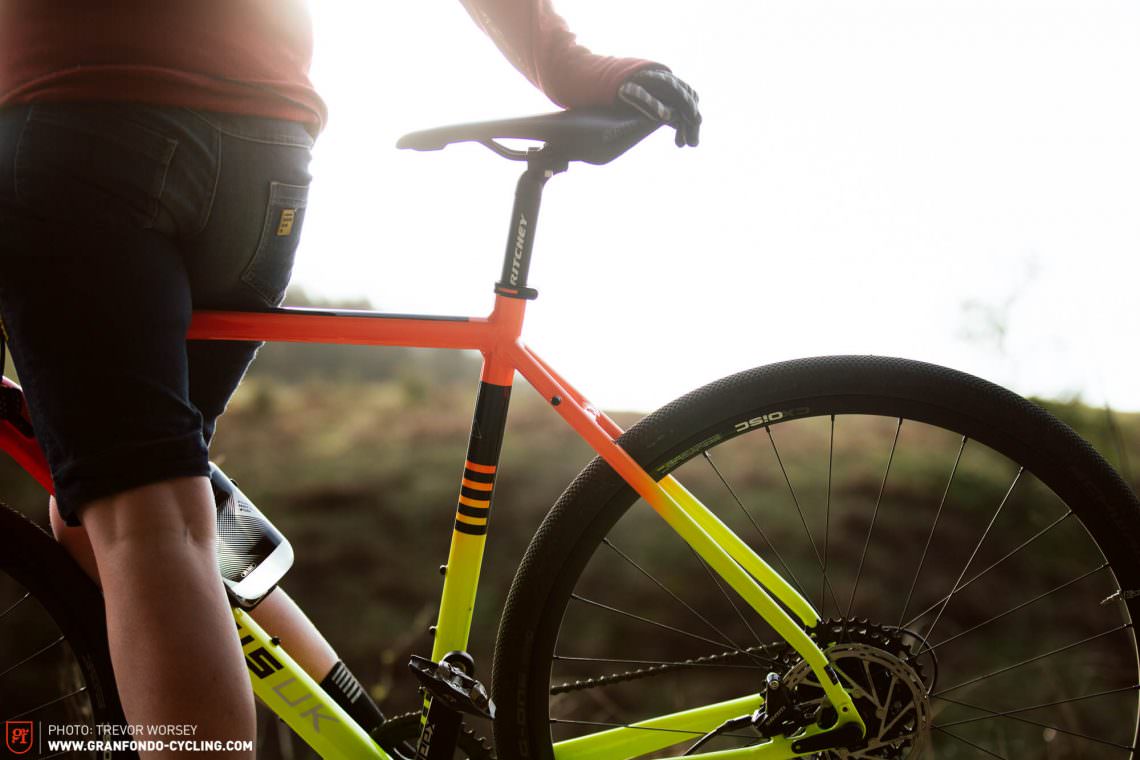
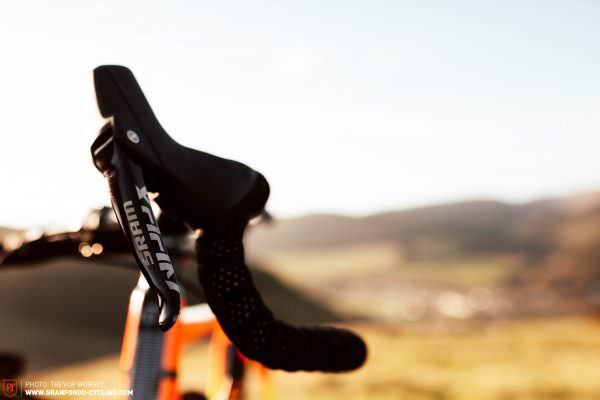
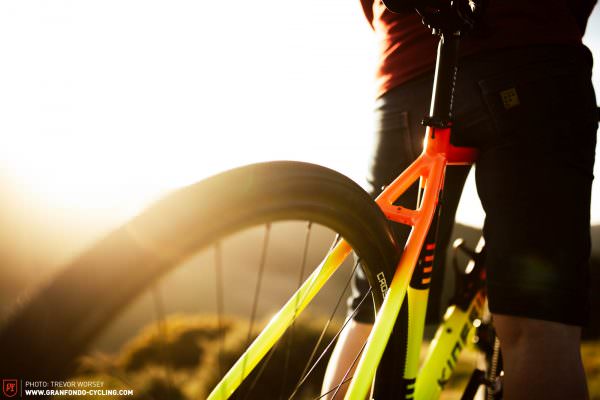
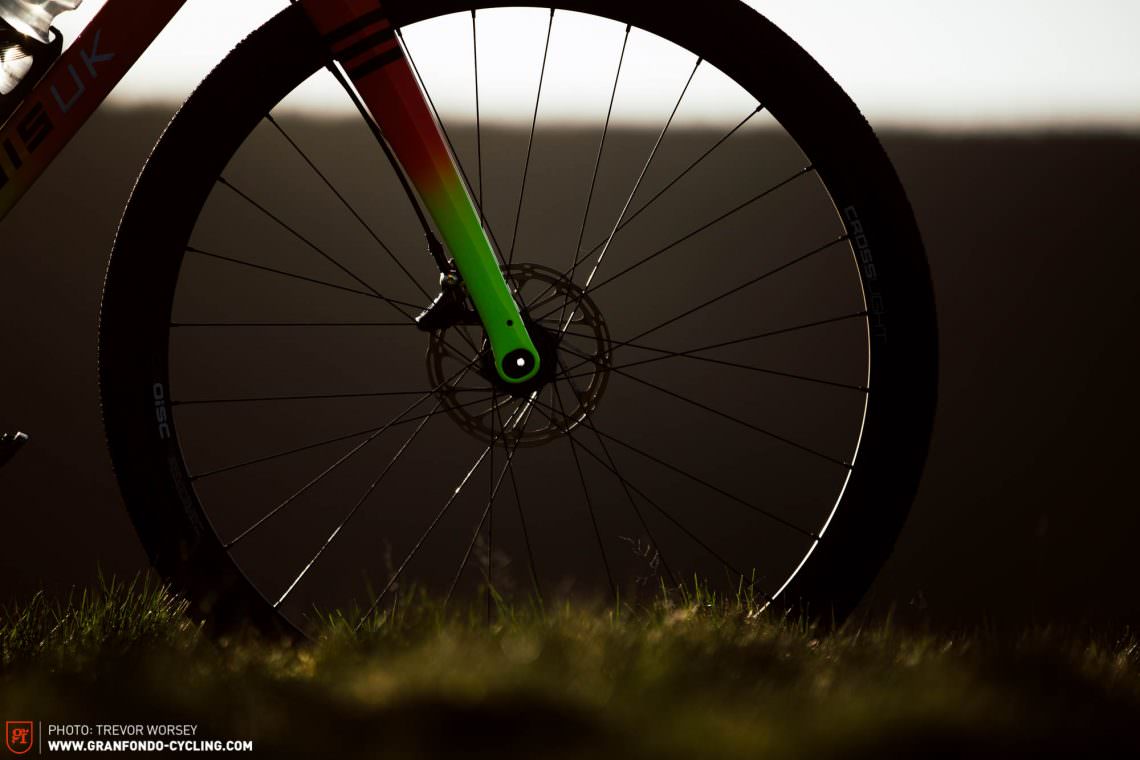
Kinesis Tripster AT
€ 2,500
Specifications
Seatpost Ritchey Aluminium 27.2 mm
Brakes SRAM Apex 1 HYD 160/160 mm
Drivetrain SRAM Apex 1 / SRAM Rival 1
Stem Ritchey Aluminium
Handlebar Ritchey Evomax Comp
Wheelset Kinesis Crosslight V5 compatible 700C
Tires Schwalbe G-One All Round Race Guard 700 x 38C
Gearing 40t chainring, 172.5 mm cranks, and an 11-42t Cassette
Technical Data
Size 48 51 54 55.5 57 60 63
Weight 9.51 kg

The geometry of the Kinesis Tripster AT
We received a size 54 cm Tripster AT bike to test, targeted at riders between 171-178 cm tall. With a 383.8 mm reach and 550 mm effective top tube, the size is quite compact but our (shoe) size 41 tester experienced no problems with toe-overlap at the shortest 47 mm fork rake. A generous 1,038 mm wheelbase and 70.5° head angle nod towards the long and slack revolution. The 579.4 mm stack and 70 mm bottom bracket drop the rider is integrated into the bike and the long 440 mm chainstays suggest predictable cornering. The seat position is defined by a 74° seat tube angle. Overall the geometry is more ‘comfort’ than ‘aggressive’ promoting a more upright position.
| Size | 51 | 54 | 55,5 | 57 | 60 |
|---|---|---|---|---|---|
| Seat tube | 510 mm | 540 mm | 555 mm | 570 mm | 600 mm |
| Top tube | 540 mm | 555 mm | 560 mm | 570 mm | 585 mm |
| Head tube | 135 mm | 160 mm | 172.5 mm | 185 mm | 210 mm |
| Head angle | 70.5° | 70.5° | 70.5° | 70.5° | 71.0° |
| Seat angle | 74.0° | 74.0° | 73.0° | 73.0° | 73.0° |
| Chainstays | 440 mm | 440 mm | 440 mm | 440 mm | 440 mm |
| BB Drop | 70 mm | 70 mm | 70 mm | 70 mm | 70 mm |
| Wheelbase | 1,032.7 mm | 1,038.25 mm | 1,043.8 mm | 1,054.4 mm | 1,065.0 mm |
| Reach | 380.6 mm | 383.8 mm | 384.7 mm | 385.6 mm | 392.8 mm |
| Stack | 555.9 mm | 579.4 mm | 591.2 mm | 603 mm | 628.7 mm |

The Kinesis Tripster AT adventure bike in review
The Kinesis Tripster AT is targeted at the adventure rider, at those looking for a do-it-all bike that will not break the bank. As such, that’s exactly how we tested it in the borders of Scotland. From rainy-day commutes to ridge-line blasts at sunset, we put the lairy coloured packhorse to work. The geometry is very well suited to the bike’s intent. The long 440 mm chainstays may steal some urgency in tight turns, but they position the rider weight centrally in the bike, providing grip to the front wheel from an upright and comfortable position – a real benefit to long-distance bike packers helping multi-day missions become peaceful rather than purgatory. This upright and compact position also helps reduce fatigue on three-digit gravel missions. On the road, the relaxed geometry and upright position feel more steady than racy, the tall 160 mm head tube discourages teeth-clenched sprinting, instead promoting a ‘take in the view’ vibe. It’s a bike happy to connect up gravel sections on the asphalt with an easy-going efficiency.
In terms of comfort, while not overly harsh, it’s no match for its titanium sibling and those looking to take in huge trips would be best to check out more compliant carbon seat posts. The Schwalbe G-One 38C tires roll quickly and give good all-rounder grip. Off-road, the ride is confident and composed, favouring stability over agility, but for the intended purpose, that’s just the quality you want. We imagine the Tripster AT will spend more time as a pack mule, heavily laden with bikepacking bags, rather than going for KOM’s down the cycle lanes, and its predictable nature is perfectly suited for the former.
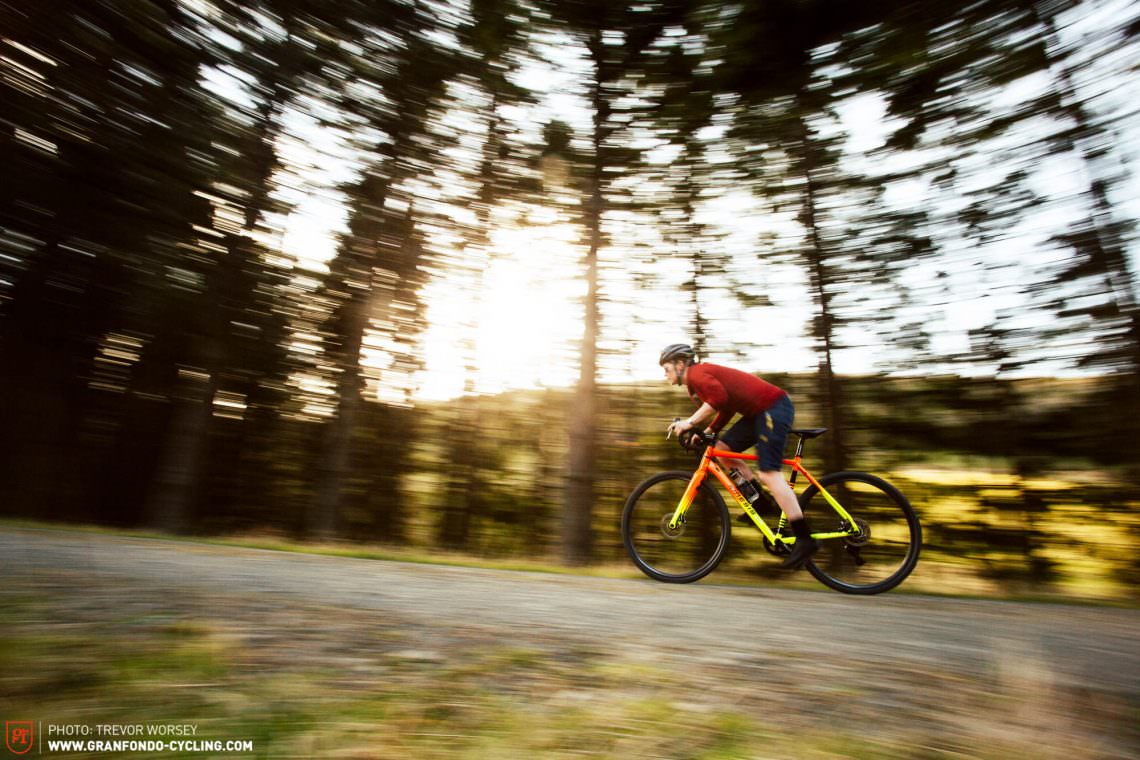
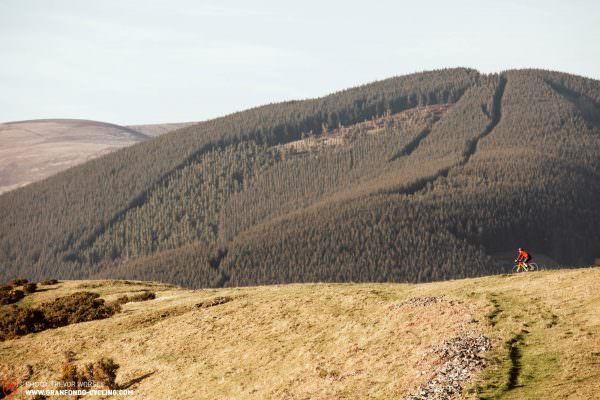

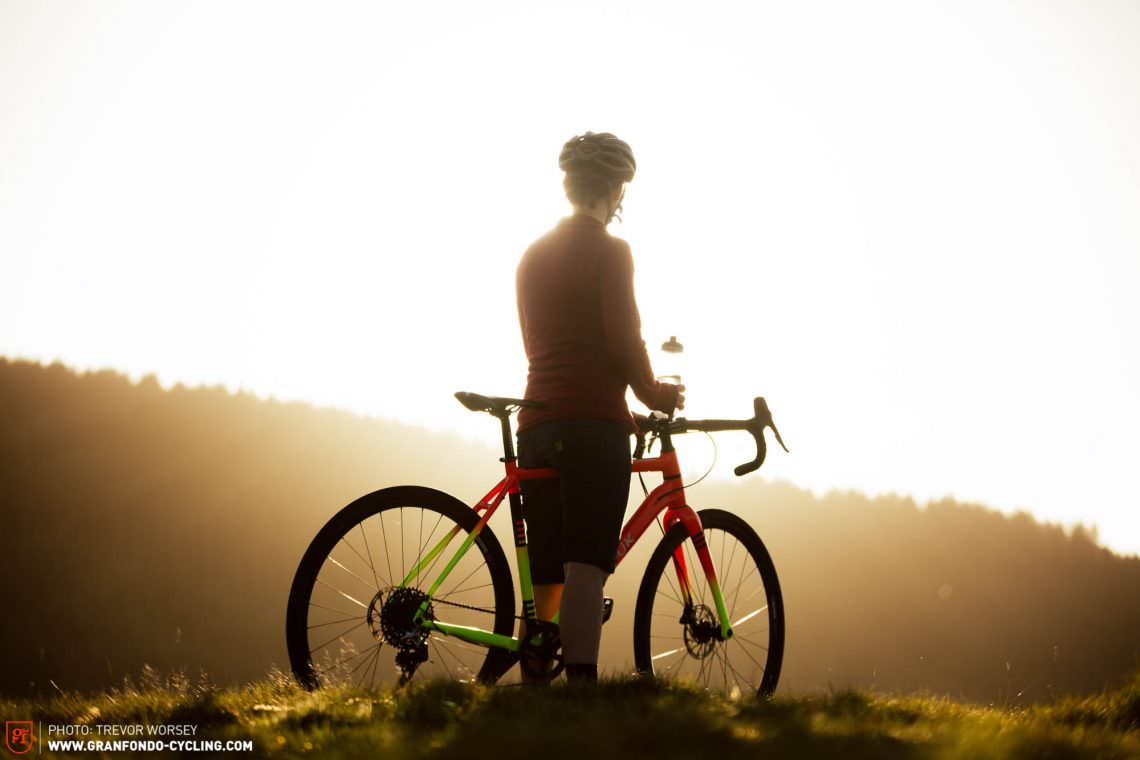
The flip-chip on the Columbus fork allows either 47 or 52 mm of rake to be run. In theory, increasing the rake (or offset) decreases the trail (the horizontal distance from where the front wheel touches the ground to where the steering axis intersects the ground) increasing responsiveness, but also decreasing stability, and vice-versa. As such the 52 mm rake should be more agile while the 47 mm should be more stable at speed. In reality, after extensive testing, we prefered the marginally sharper steering and longer wheelbase at 52 mm, but the difference was almost imperceptibly subtle.
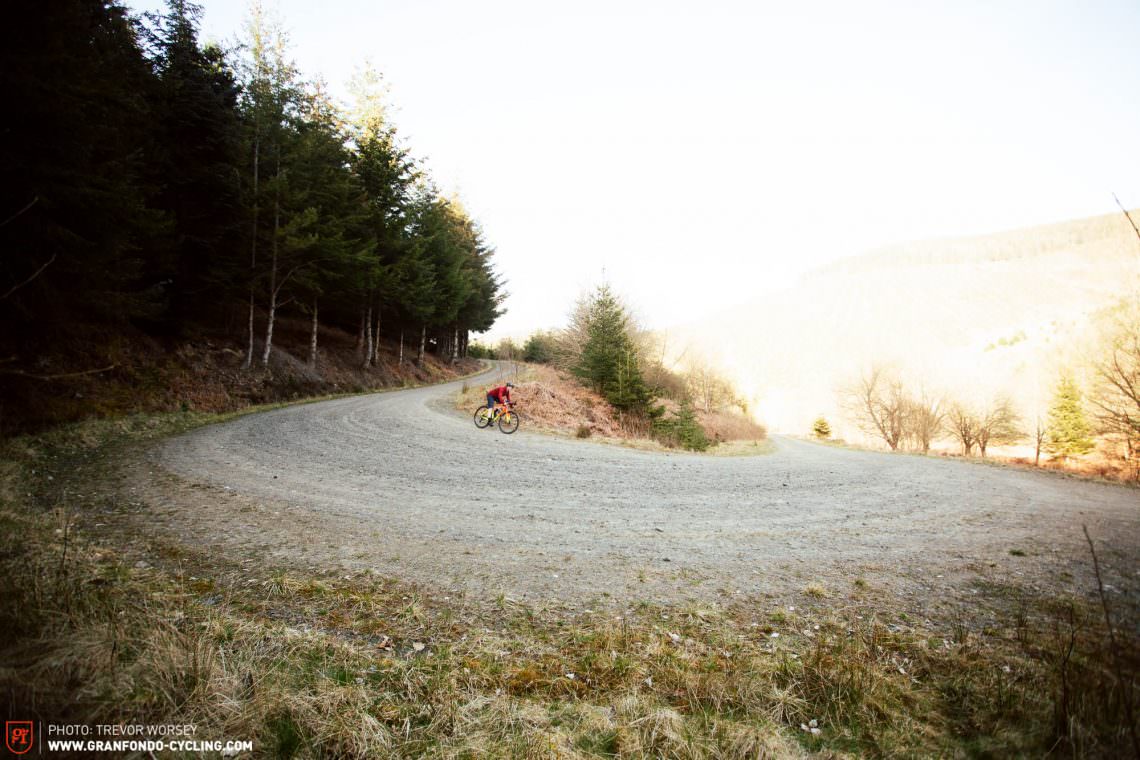
The SRAM Apex / Rival drivetrain shifts cleanly if a little noisily between the sprockets, however with the arrival of Shimano’s GRX, SRAM’s double-tap shifting now feels less intuitive in comparison. Unlike Shimano, with double-tap you cannot shift and brake at the same time, and if you forget you’re already in the lowest gear and try to select one more, it up-shifts at the worst possible time. The 12° flared Ritchey Evomax Comp is a comfortable bar, with enough flare on the drops to help on the descents, while retaining a compact position on the hoods for road work. Those with big hands will find the bend of the bar quite tight, but they will be in the minority. The own-brand Kinesis Crosslight wheels rolled well and took some serious abuse during our testing, but we did find the lazy engagement speed of the 3-pawl freehub could be felt when powering over rough ground.
Unfortunately (but fair given the price tag) the Kinesis Tripster AT is not supplied tubeless. However, those looking to benefit from the increased speed and comfort provided by tubeless will be disappointed that while the wheels are tubeless ready, the base model Schwalbe G-One tires are not, requiring an expensive change of tires, as well as sealant – we would have prefered to see tubeless ready tires as standard and paid a little more. Overall the Tripster AT is a great adventure bike on a budget. However, the competition is heating up and you can buy similarly-specified direct-sales bikes for less like the €1,499 Canyon Grail AL 7.0 and £2,268 ROSE BACKROAD GRX RX600. Alternatively, if you have fallen for the striking Tripster AT, you could buy a frame-only and build it up with the new Shimano GRX drivetrain and components of your choice.

Tuning tips: Change the tires and run the bike tubeless | Buy some nice bikepacking bags and get into the hills
Conclusion
While the aluminium Kinesis Tripster AT may not get your heart beating fast like the titanium version, it’s a comfortable and easy-going adventure bike capable of taking on huge days in the saddle. If you’re searching for an affordable entry into the world of bike-packing, or a commuter with off-road credentials, the Kinesis Tripster AT is a well thought out gravel bike all-rounder to add to the list.
Tops
- Easy-going, head up riding position
- Stable and predictable
- In-your-face paintjob attracts attention
- Good gravel allrounder
Flops
- No tubeless capability out of the box
- The SRAM Apex / Rival drivetrain is a little clunky
Did you enjoy this article? If so, we would be stoked if you decide to support us with a monthly contribution. By becoming a supporter of GRAN FONDO, you will help secure a sustainable future for high-quality cycling journalism. Click here to learn more.
Words & Photos:







